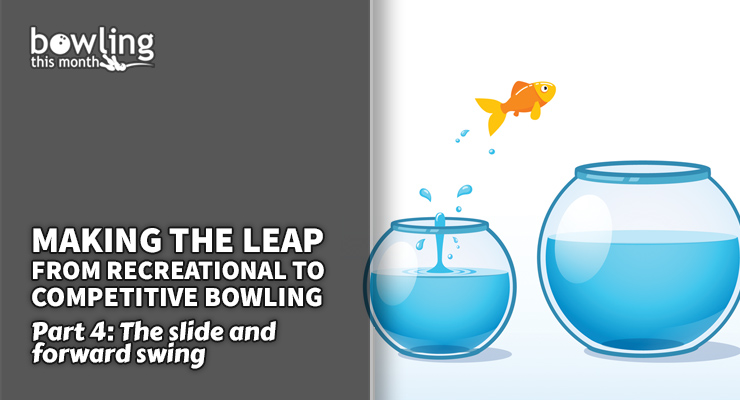Article Contents
- 1. Terminology and technique
- 2. The interconnectivity of bowling skills
- 3. The forward swing
- 3.1. Wait for the ball
- 4. Keep those knees flexed
- 5. Forward swing and slide
- 6. The balance leg
- 7. Release, loft, and grabbing
- 8. The follow through
- 9. Summary
Note: This article is only available to Bowling This Month subscribers.
Welcome to the fourth installment of the Making the Leap… series. So far in this series aimed at those transitioning from recreational to competitive bowling, we’ve talked about ball composition, choosing ball weight, and avoiding injuries. Part 2 looked at targeting, your pre-shot routine and stance, the types of pushaways, and your first step. In Part 3, we turned to the middle of the approach: the second and third steps, the armswing, spine tilt, and open shoulders.
As we enter this article, you’ve already completed three-fourths of your footwork, your backswing has peaked, and you are about to begin your forward swing and fourth step. You know that the fourth step is actually a slide, so that’s what I’ll call it from here on. First, let’s do a quick recap of the terminology and technique I’ll be using throughout the article.
Terminology and technique
All of this “swing” stuff can get confusing. To make sure we’re clear on the terminology I’m using, here’s a brief summary:
- Downswing: the bowling ball’s downward movement at the completion of the pushaway. The downswing is complete when the arm is vertical. Timing may vary in relationship to the footwork based on your game, as discussed in Part 2.
- Backswing: as the word implies, the movement of the ball from the completion of the downswing to the swing’s apex behind your body.
- Forward swing: the ball’s movement from the top of the backswing to completion of the follow through. It’s true that the ball is beginning to come down, and that many coaches refer to this as the downswing. However, its ultimate direction is forward, toward the point of release and follow through, so I prefer this terminology.
The interconnectivity of bowling skills
I’m guessing you once thought bowling was pretty easy. It looked easy, right? But that was before you actually bowled for the first time. Hmmm… Not so easy after all!
You know now that becoming a competitive bowler means learning dozens of individual skills. Moreover, pretty much everything you do, from the stance to the follow through, is connected ...
Already a premium member? Click here to log in.


